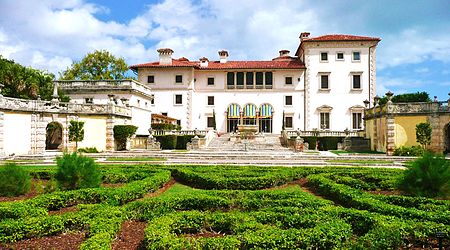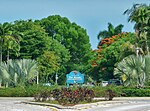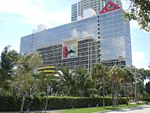Vizcaya Museum and Gardens

The Vizcaya Museum and Gardens, previously known as Villa Vizcaya, is the former villa and estate of businessman James Deering, of the Deering McCormick-International Harvester fortune, on Biscayne Bay in the present-day Coconut Grove neighborhood of Miami, Florida. The early 20th-century Vizcaya estate also includes extensive Italian Renaissance gardens, native woodland landscape, and a historic village outbuildings compound. The landscape and architecture were influenced by Veneto and Tuscan Italian Renaissance models and designed in the Mediterranean Revival architecture style, with Baroque elements. F. Burrall Hoffman was the architect, Iwahiko Tsumanuma (also known as Thomas Rockrise) was the associate architect, Paul Chalfin was the design director, and Diego Suarez was the landscape architect.Miami-Dade County now owns the Vizcaya property, as the Vizcaya Museum and Gardens, which is open to the public. The location is served by the Vizcaya Station of the Miami Metrorail.
Excerpt from the Wikipedia article Vizcaya Museum and Gardens (License: CC BY-SA 3.0, Authors, Images).Vizcaya Museum and Gardens
Brickell Avenue, Miami
Geographical coordinates (GPS) Address Nearby Places Show on map
Geographical coordinates (GPS)
| Latitude | Longitude |
|---|---|
| N 25.743611111111 ° | E -80.210277777778 ° |
Address
The Barge
Brickell Avenue
33129 Miami
Florida, United States
Open on Google Maps








